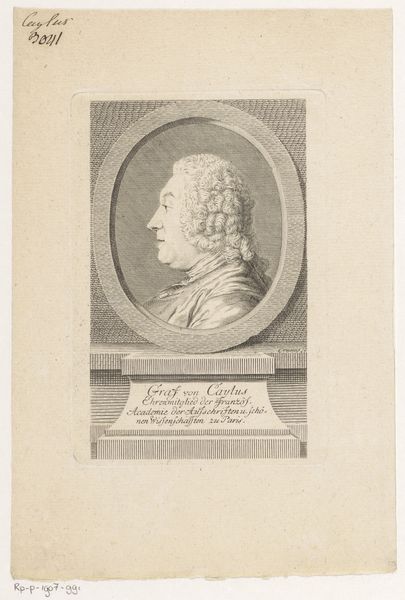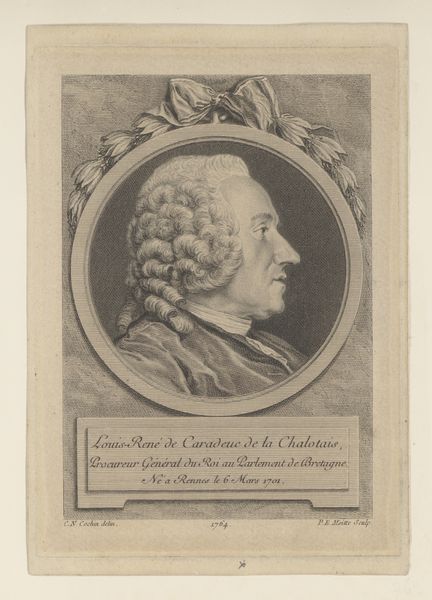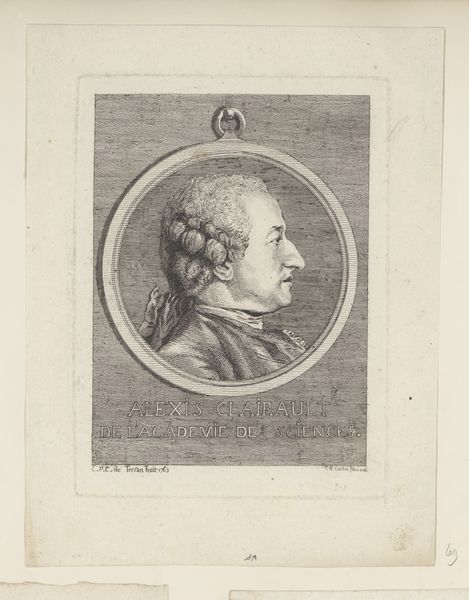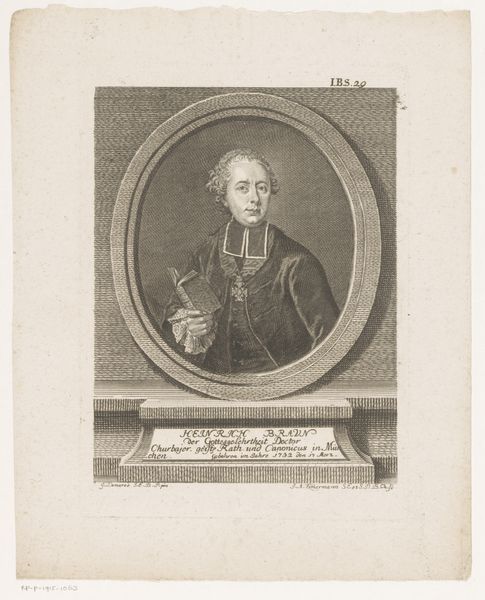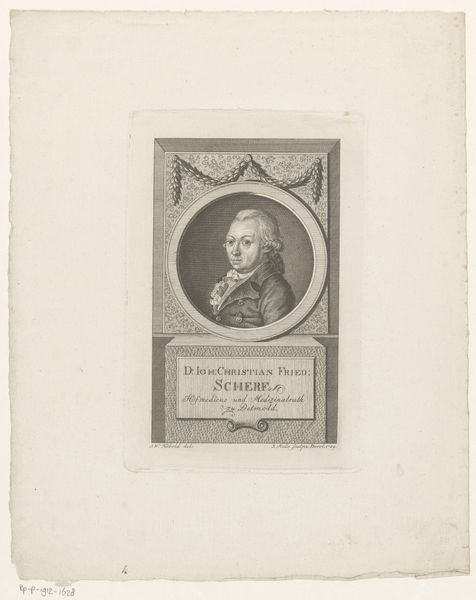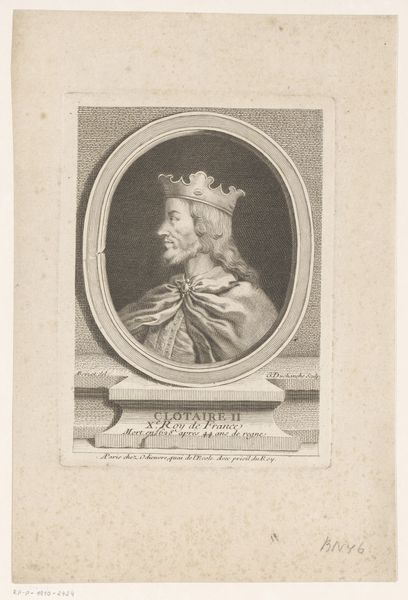
engraving
#
portrait
#
neoclacissism
#
figuration
#
line
#
engraving
Dimensions: height 207 mm, width 136 mm
Copyright: Rijks Museum: Open Domain
This portrait of Anne Claude Philippe de Tubière, Comte de Caylus, was made using engraving, a printmaking technique that demands precision and meticulous labor. The process begins with an engraver using a tool called a burin to carve lines directly into a metal plate, usually copper. The depth and density of these lines determine the amount of ink held and, thus, the darkness of the printed mark. In this portrait, observe the fine network of lines creating the Comte's face and wig, capturing both texture and form with remarkable detail. The engraver’s skill is evident in the subtle gradations of tone, achieved through varying the spacing and weight of the lines. Engraving was a highly valued skill, often associated with the reproduction of paintings, or for creating portraits like this. The labor-intensive nature of engraving reflects a specific relationship to production and consumption. Ultimately, understanding the processes behind works like this allows us to appreciate the labor, skill, and social context intertwined within it, bridging the gap between craft and fine art.
Comments
No comments
Be the first to comment and join the conversation on the ultimate creative platform.
